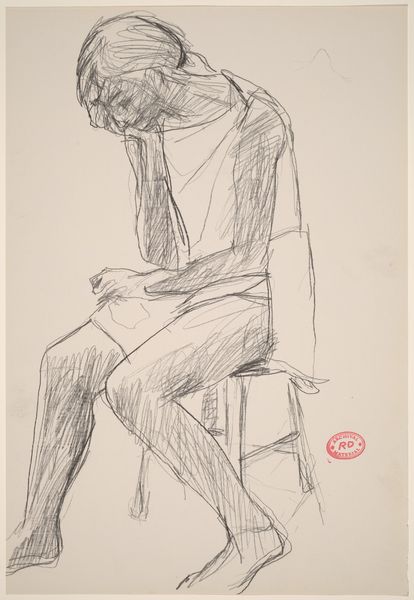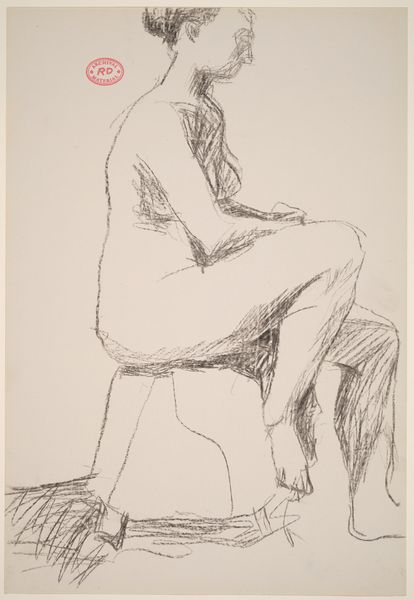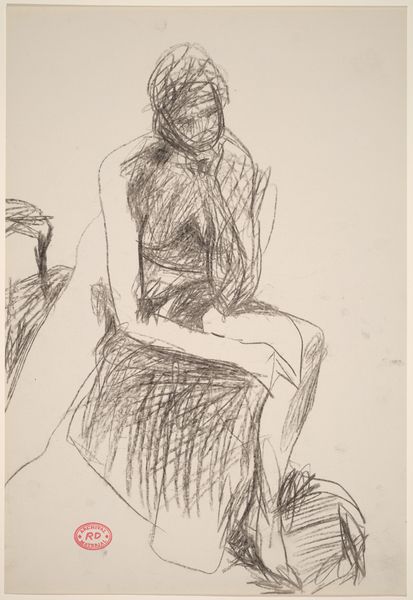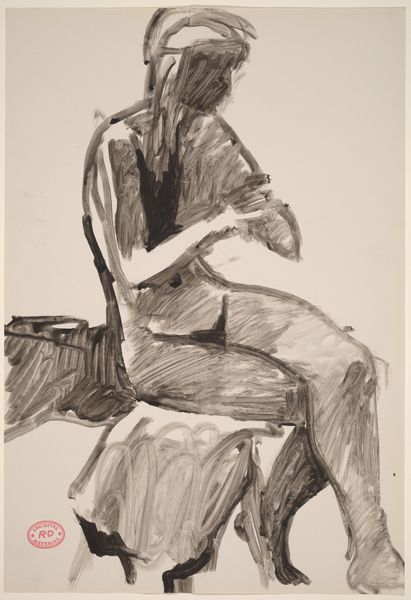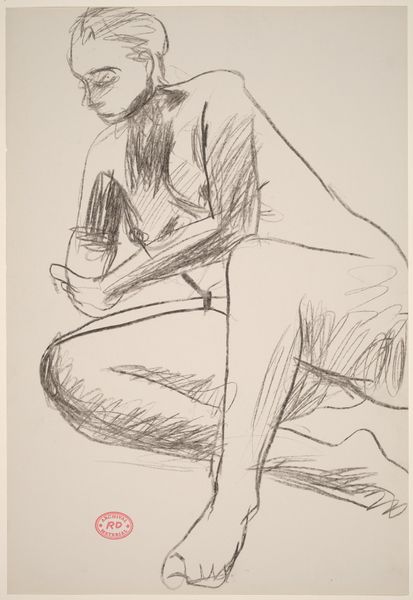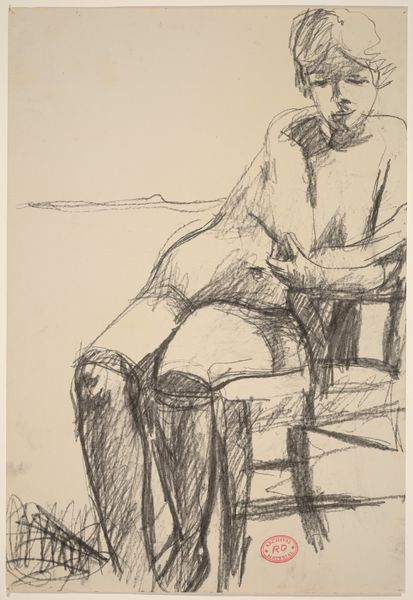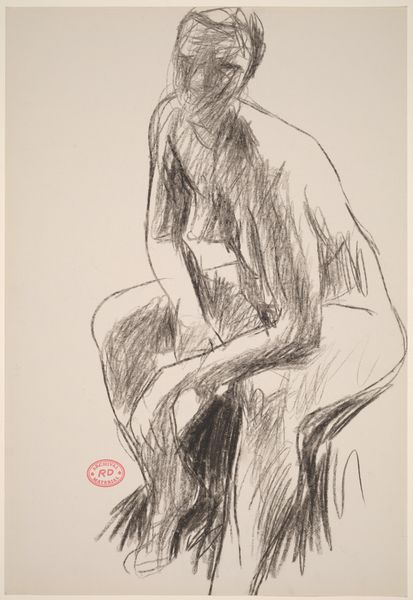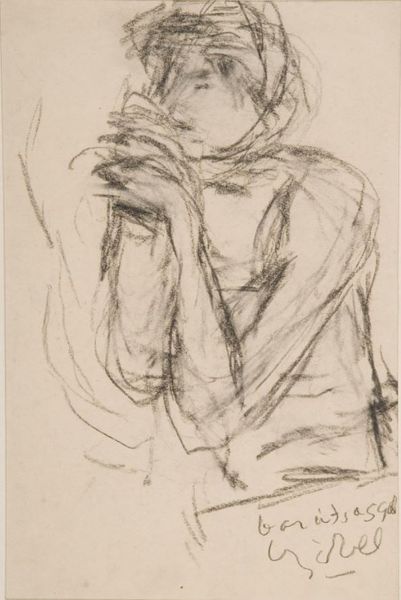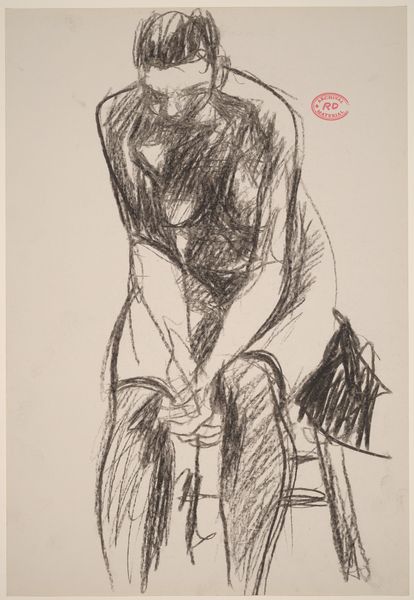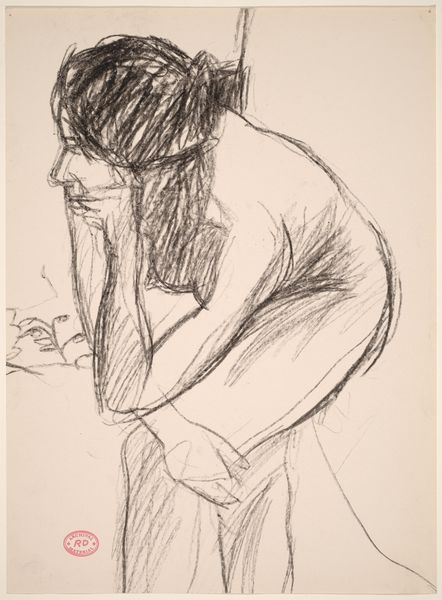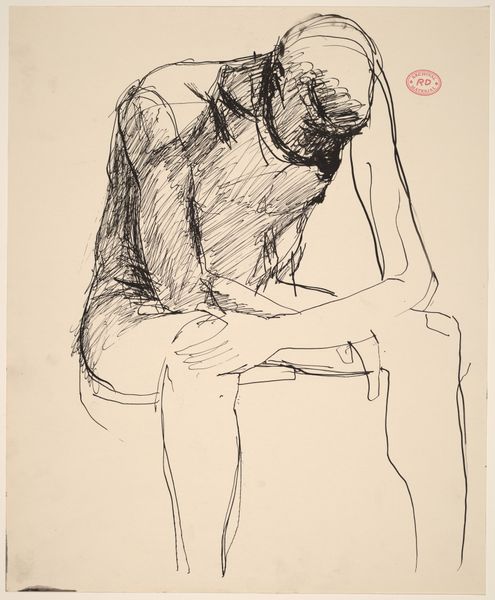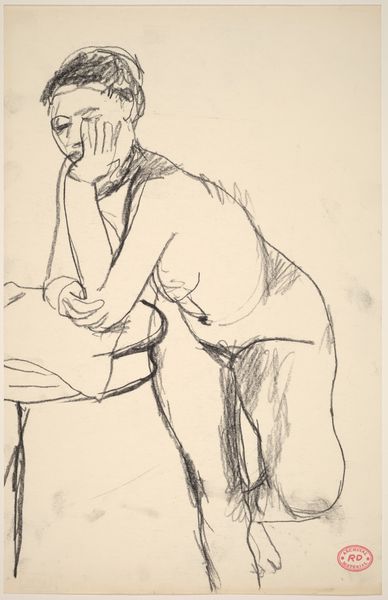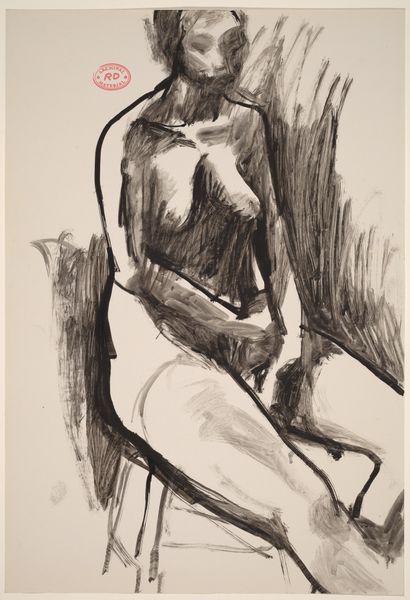![Untitled [seated nude crossing her legs and resting her chin on her right hand] by Richard Diebenkorn](/_next/image?url=https%3A%2F%2Fd2w8kbdekdi1gv.cloudfront.net%2FeyJidWNrZXQiOiAiYXJ0ZXJhLWltYWdlcy1idWNrZXQiLCAia2V5IjogImFydHdvcmtzL2ZiY2RlZTEyLTJlMzgtNGUwZS1iOTk3LTNjMDMzMTFjMWExYi9mYmNkZWUxMi0yZTM4LTRlMGUtYjk5Ny0zYzAzMzExYzFhMWJfZnVsbC5qcGciLCAiZWRpdHMiOiB7InJlc2l6ZSI6IHsid2lkdGgiOiAxOTIwLCAiaGVpZ2h0IjogMTkyMCwgImZpdCI6ICJpbnNpZGUifX19&w=3840&q=75)
Untitled [seated nude crossing her legs and resting her chin on her right hand] 1955 - 1967
0:00
0:00
drawing, charcoal
#
portrait
#
abstract-expressionism
#
drawing
#
figuration
#
form
#
bay-area-figurative-movement
#
line
#
sketchbook drawing
#
charcoal
#
nude
Dimensions: overall: 40.6 x 27.9 cm (16 x 11 in.)
Copyright: National Gallery of Art: CC0 1.0
Editor: We're looking at Richard Diebenkorn’s "Untitled" charcoal drawing, created sometime between 1955 and 1967. It depicts a seated nude, legs crossed, head resting on her hand. There’s a sense of melancholy, and it feels very immediate, almost like a sketch. What strikes you about it? Curator: The immediacy you mention is key. Think about the charcoal itself - how easily it marks, how readily it smudges. Diebenkorn exploits that inherent instability. He’s not aiming for polished representation; he’s after something rawer, more process-oriented. Consider how the repeated, almost frantic lines suggest a search for form, a restless exploration of the subject's weight and volume. What kind of labor is embodied in the creation of this work, do you think? Editor: It seems almost performative, the action of drawing being just as important as the final image. There is no artifice, is there? Curator: Precisely. This is not about idealizing the nude but examining the material act of rendering it. Notice the sketch-like quality. How might its provisional nature impact how the labor of creating this image is valued? Think about the divide between "finished" art and preparatory sketches. Diebenkorn blurs those boundaries. Editor: So, by presenting the process so openly, he elevates the value of the labor, and it also challenges what we consider a finished piece? Curator: Exactly. He's drawing attention to the very act of creation, highlighting the hand of the artist, the material of the charcoal, and the support of the paper as critical elements of meaning. It begs the question of how his location as a west coast artist shaped his choices to depart from certain established ways of doing things, even while still drawing on older traditions. Editor: It makes you consider the choices and labor involved in every artwork differently. Curator: Yes, seeing how an artwork is actually made and what traditions shaped the choice of materials helps to de-mystify it, in the best possible way.
Comments
No comments
Be the first to comment and join the conversation on the ultimate creative platform.
